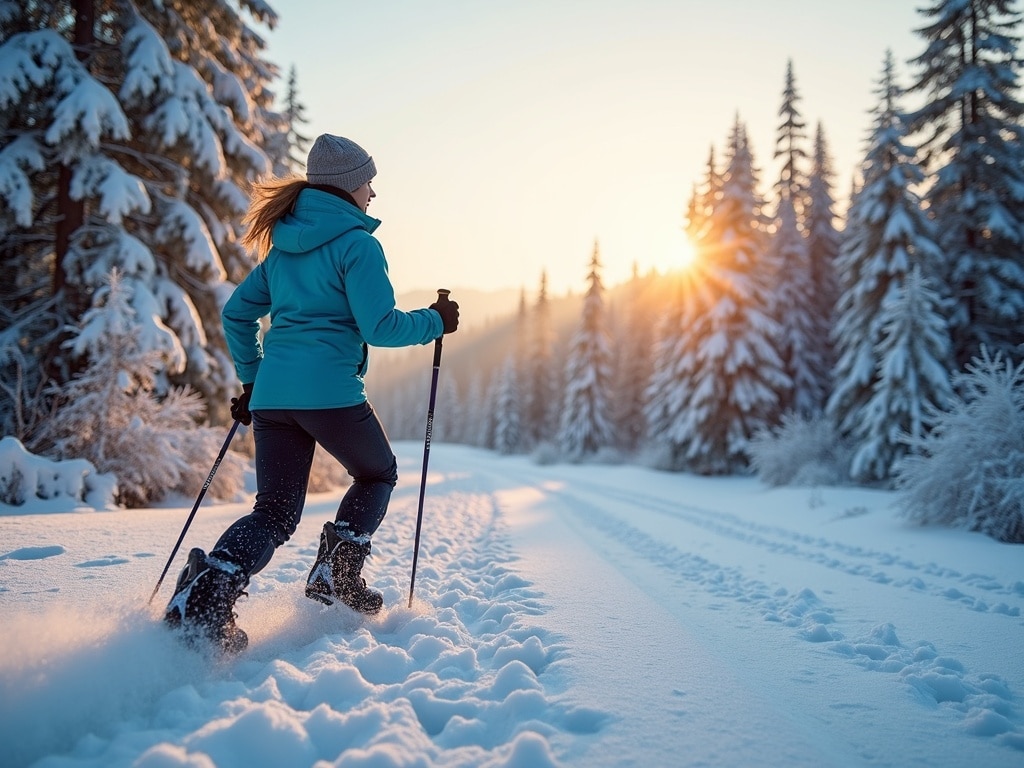Embrace the Chill: Your Guide to Invigorating Winter Outdoor Workouts
Forget hibernating indoors until spring! Winter offers unique opportunities to invigorate your fitness routine with crisp air, stunning scenery, and a challenging environment that pushes you harder. But braving the cold requires a different approach than your summer sweat sessions. This guide will transform your perspective on winter workouts, providing you with creative ideas, safety tips, and motivation to make the most of the season.
Why Take Your Workout Outdoors in Winter?
Sure, the couch looks tempting, but the benefits of winter outdoor workouts extend far beyond burning calories:
- Boosted Mood: Sunlight, even on cloudy days, helps combat Seasonal Affective Disorder (SAD) by stimulating Vitamin D production and serotonin release.
- Enhanced Calorie Burn: Your body works harder to maintain its core temperature in the cold, increasing your metabolic rate.
- Strengthened Immune System: Moderate exposure to cold air can stimulate the production of white blood cells, bolstering your immunity.
- Mental Toughness: Overcoming the initial resistance to the cold builds resilience and mental fortitude.
- Unique Scenery: Winter landscapes offer a beauty unlike any other season.
Gear Up for Success: Dressing for Winter Workouts
Proper attire is paramount for safe and enjoyable winter workouts. Layering is key, allowing you to adjust to changing temperatures and exertion levels.
The Layering System
- Base Layer: Opt for moisture-wicking fabrics like merino wool or synthetic materials to draw sweat away from your skin. Avoid cotton, which retains moisture and can lead to chills.
- Mid Layer: Fleece or a lightweight insulated jacket provides warmth without bulk.
- Outer Layer: A windproof and water-resistant jacket and pants will shield you from the elements.
Essential Winter Workout Accessories
- Gloves or Mittens: Protect your hands from frostbite. Mittens generally provide more warmth than gloves.
- Hat or Beanie: Cover your head to prevent heat loss.
- Warm Socks: Wool or synthetic socks are essential for keeping your feet warm and dry.
- Neck Gaiter or Scarf: Protect your face and neck from wind and cold.
- Sunglasses or Goggles: Shield your eyes from the sun’s glare, especially on snowy days.
- Traction Devices: Consider using ice cleats or shoe spikes for added grip on icy surfaces.
Winter Outdoor Workout Ideas to Spark Your Motivation
Ready to ditch the treadmill and embrace the winter wonderland? Here are some invigorating workout ideas to get you started:
Running or Jogging
Running remains a fantastic option, but adjust your pace and stride to account for slippery conditions. Choose well-lit routes and be mindful of ice patches. Consider trail running for softer surfaces and scenic views ().
Winter Hiking or Snowshoeing
Hiking offers a lower-impact alternative to running, allowing you to enjoy the scenery at a more relaxed pace. Snowshoeing provides an excellent cardio workout and allows you to explore deeper snow-covered trails.
Cross-Country Skiing
A full-body workout that engages nearly every muscle group, cross-country skiing is an excellent way to explore winter landscapes. Consider both classic and skate skiing techniques for variety.
Ice Skating
Glide and twirl your way to fitness with ice skating! Whether you prefer leisurely laps or practicing figures, it’s a fun and engaging cardiovascular workout.
Winter Cycling (Fat Biking)
Equip your bike with wider tires designed for snow and ice, and explore winter trails on a fat bike. These bikes provide excellent traction and stability, making winter cycling surprisingly accessible.
Outdoor Bootcamp or Circuit Training
Adapt your favorite bootcamp or circuit training routine to the outdoors. Utilize park benches, stairs, and even snowbanks for added challenges. Examples include:
- Snow Angels: A classic winter exercise that works your chest, shoulders, and core.
- Bench Dips: Strengthen your triceps using a park bench.
- Stair Climbs: A great cardio and leg workout.
- Snow Squats: Add resistance by squatting into the snow.
- Hill Sprints: Find a small, safe incline for interval training.

Safety First: Essential Precautions for Winter Workouts
Prioritize safety to prevent injuries and health issues during your winter workouts.
Check the Weather Forecast
Stay informed about temperature, wind chill, and precipitation. Avoid exercising outdoors during extreme cold or icy conditions.
Hydrate Properly
Dehydration can occur even in cold weather. Drink plenty of water before, during, and after your workout.
Warm-Up Thoroughly
Cold muscles are more prone to injury. Spend at least 10-15 minutes warming up indoors before heading outside. Focus on dynamic stretches like arm circles, leg swings, and torso twists.
Be Visible
Wear bright clothing or reflective gear, especially during dawn or dusk.
Know Your Limits
Don’t push yourself too hard, especially when starting a new winter workout routine. Listen to your body and take breaks when needed.
Be Aware of Hypothermia and Frostbite
Learn the symptoms of hypothermia (shivering, confusion, slurred speech) and frostbite (numbness, pale skin). Seek medical attention immediately if you suspect either condition.
Buddy Up
Whenever possible, work out with a friend or let someone know your route and estimated return time.
Nutrition for Winter Workouts: Fueling Your Body for the Cold
Your nutritional needs may change in winter. Focus on warm, nourishing foods to fuel your workouts and support your immune system.
Prioritize Protein
Protein is essential for muscle repair and recovery. Include sources like lean meats, poultry, fish, beans, and lentils in your diet.
Embrace Healthy Fats
Healthy fats provide energy and help your body absorb vitamins. Incorporate sources like avocados, nuts, seeds, and olive oil.
Load Up on Fruits and Vegetables
Fruits and vegetables are packed with vitamins, minerals, and antioxidants to support your immune system. Choose seasonal options like citrus fruits, root vegetables, and leafy greens.
Warm Beverages
Sip on warm beverages like herbal tea, broth-based soups, or hot chocolate (in moderation) to stay hydrated and warm.
Consider Vitamin D Supplementation
Since sun exposure is limited during winter, consider taking a vitamin D supplement to maintain optimal levels. Consult with your doctor to determine the appropriate dosage.
Make it a Habit: Staying Motivated Throughout the Winter
Consistent motivation is key to maintaining your winter workout routine.
- Set Realistic Goals: Don’t try to do too much too soon. Start with shorter workouts and gradually increase the duration and intensity.
- Find a Workout Buddy: Exercising with a friend can provide accountability and motivation.
- Reward Yourself: Treat yourself to a warm bath, a cozy movie night, or a healthy indulgence after a successful workout.
- Track Your Progress: Monitor your workouts and celebrate your achievements to stay motivated.
- Embrace the Challenge: View winter workouts as an opportunity to challenge yourself and build resilience.
Beyond the Body: The Mental Rewards of Winter Exercise
The benefits of winter outdoor workouts extend far beyond physical fitness. Embracing the elements can boost your mood, reduce stress, and enhance your appreciation for nature’s beauty. There’s a unique satisfaction in conquering the cold and pushing your limits. So, bundle up, step outside, and discover the invigorating power of winter workouts! The crisp air and stunning scenery await. You might just find yourself looking forward to winter’s arrival each year.
